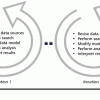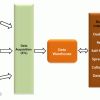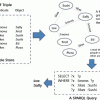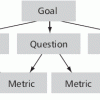Strategic advice to leverage new technologies
Technology is at the heart of nearly every enterprise, enabling new business models and strategies, and serving as the catalyst to industry convergence. Leveraging the right technology can improve business outcomes, providing intelligence and insights that help you make more informed and accurate decisions. From finding patterns in data through data science, to curating relevant insights with data analytics, to the predictive abilities and innumerable applications of AI, to solving challenging business problems with ML, NLP, and knowledge graphs, technology has brought decision-making to a more intelligent level. Keep pace with the technology trends, opportunities, applications, and real-world use cases that will move your organization closer to its transformation and business goals.
Recently Published
Companies are always searching for a competitive edge -- a "leg up," if you will, on their competition. As a result, many organizations today are looking to social media channels in an attempt to understand what consumers think of them or, better still, what those same consumers think about their competitors. In this article, we discuss the ramifications of drawing rapid conclusions from the analysis of social media discussions without a thorough understanding of the data.
The need for businesses to maintain and use data in new ways is rapidly growing. Instead of removing data, businesses are adding and using more data than ever. The lower cost of storage is part of the reason, but regulation, competitiveness, and the digital age are also key drivers. Healthcare organizations have to track their patients to improve patient outcomes and to be eligible for reimbursement bonuses.
The Semantic Web, a collection of technologies designed to add meaning and enable intelligent search across the Web, is now taking shape as a strategy to help navigate the challenges of Big Data, including how to find insights and leverage the ever-increasing volume of data available to us from sensors, social media posts, videos, pictures, and purchase transactions, just to name a few. But more than just size alone, Big Data is seen as the convergence of "3 Vs": volume, velocity, and variety.
Managing population health entails a complex set of activities involving many interconnected parts: health and its multiple determinants, healthcare delivery systems, information technology, and analytics. Personal biology and genetics; diagnosis, testing, and treatment across multiple providers and settings; and a host of environmental factors all affect health outcomes and the quality and cost of care delivery.
The analytics of Big Data promises to unlock vast amounts of information just waiting to be known and used. However, Big Data is characterized not only by its extraordinary volume, which grows exponentially every day, but also by its nature -- very unstructured, very raw, and far too voluminous to be analyzed using traditional methods such as relational databases.
Supporting the Software Development Process with Data Analysis
This Executive Update presents a methodology and a set of tools designed to support the software development process based on the collection and analysis of a large set of information. The design of such a system faces several challenges, such as data reliability and generating useful and timely analysis for both developers and managers. Furthermore, the data and its related analysis are not enough to support the development process in an effective way.
"So when you come in here to help us start with agile, we also expect to benefit from your collection of best practices you must have as a consultant" is one of the more frequent client expectations we have to disappoint. "We don't have best practices," we answer, "and we don't think it's a good idea to have them."














